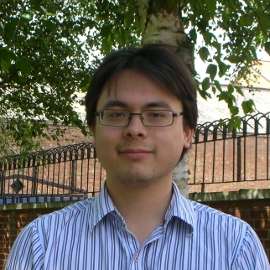Last night was a busy night for classical music in London, with the Simón Bolívar Orchestra of Venezuela, the LSO and Bernard Haitink all performing in various places around the city. But the smart kids were avoiding all that at The Forge in Camden, chilling to the sweet, complicated sounds of Christopher Redgate and his microtonal oboe.
Redgate plays a newly designed instrument called the 'Redgate-Howarth system oboe', which drastically increases the oboe's suitability for playing microtones, multiphonics and the high register. Bookending this recital were works for the instrument by both Redgate himself and his brother Roger, which brilliantly demonstrated its capacity for intense and hyper-virtuosic showcasing. Between these pieces were a number of student compositions from students of the Royal Academy of Music – two for Redgate's oboe with electronics, and several more for other combinations of instruments – but it's the fireworks of Redgate and his oboe which linger in the mind.
Both of Christopher Redgate's compositions, Microboe and Multiphonia, were clearly the work of a man who knows his instrument. Microboe is not as diminutive a piece as its title implies, and moves from an exploratory opening section which teases out the microtonal possibilities of the instrument into a complex, rapid section. It was surprisingly skittish for such an obviously cerebral piece and left me fairly convinced that developments in oboe technique are in fact worthy of general attention.
Multiphonia was devoted to exploring multiphonic possibilities within the instrument – Redgate boasted that his new oboe could produce around 2,500 different multiphonic sounds – and, consisting of an entirely continuous flurry of rapid passagework, it also required circular breathing. Again, the composition was far wittier than it might have been, and was always entertaining as well as impressive. It was refreshing to see such unabashed delight in virtuosity, and Roger Redgate's Ausgangspunkte added to this delight, being shrill, intense, just as difficult as the others, and a bit modernist. Whether the fiendishly tough piece was a product of sibling rivalry or not, the real winner was the microtonal oboe.
Christopher Redgate also played two pieces written for him by RAM students: Grigorios Giamougiannis' The Summoner and John Goldie-Scot's Experiment 3. The Summoner featured a returning stuttered fanfare of pretty, trippy broken chords which played with microtonal aspects to a certain degree but seemed just as involved with the electronic element to the composition – as, in fact, did Experiment 3, which extracted an odd watery gurgling sound from the speakers, placed in uneasy opposition to the live oboe playing. Both pieces were impressive explorations of various things, but I wondered if perhaps a few too many ideas had been thrown into the pot; certainly, they lacked the clear sense of focus of the Redgates' compositions.
Goldie-Scot had another piece performed, and Schizophrenic Sketch really seemed to have benefited from the close collaboration with its performer, cellist Ninfea Cruttwell-Reade, which Goldie-Scot mentioned in an introduction. It was a little ironic that it was this piece by Goldie-Scot that was the better exploration of instrumental technique, not the one for the crazy new instrument (Experiment 3), but at any rate there was much to enjoy in this generally gentle study of harmonic effects, bowing methods and other performative oddities – at least partially because it betrayed a fascination with the sounds produced as well as the methods used to make them.
Other compositions varied hugely in style: James Moriarty's Clarinet and Piano was a neat and perhaps consciously Webernesque set of miniatures exploring the different personalities of the two instruments, played by clarinettist Lloyd Coleman and pianist Niklas Duckworth. Brian Mark's piano work Still Debussy, played by the composer, was much as he described himself: an approximation of what an Andy Warhol print of a picture of Debussy might sound like. Richard Bullen's Rite was a graceful, dignified viola solo played with poise by Diana Matthews. I wasn't as convinced by Daniel McCallum's Interwoven Colours, for harp (Lara Somogyi), viola (Virginia Rockwell) and violin (Daniel Pioro, stepping in for a viola player at the last minute), which played with some overly familiar tonal tropes with a level of irony I couldn't quite discern. But overall the concert contained an impressive display of new compositional talent, and an intriguing contrast to the microtonal fireworks either side of it.


